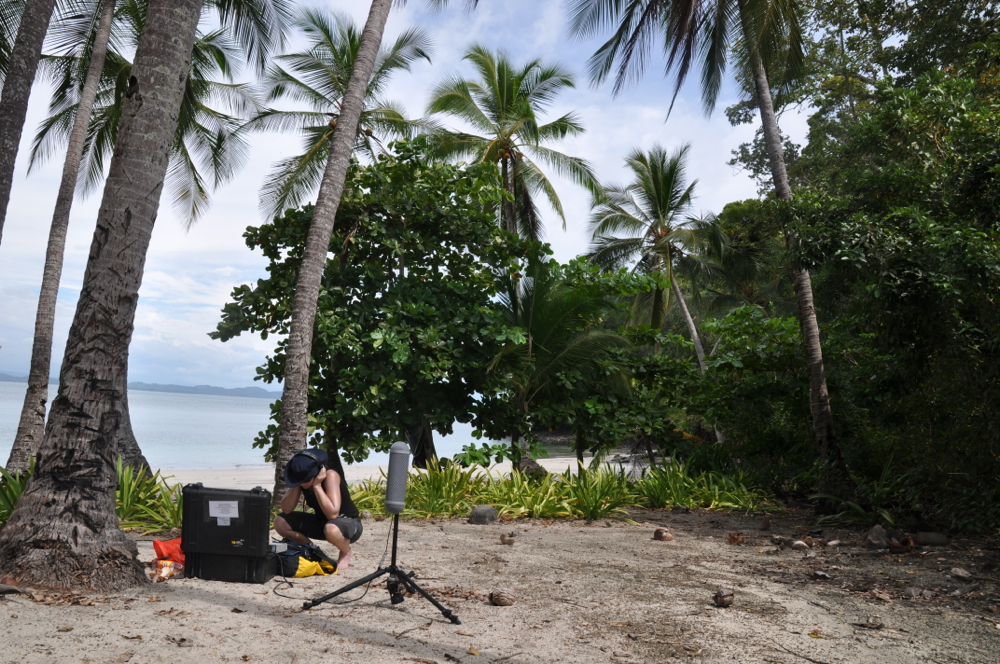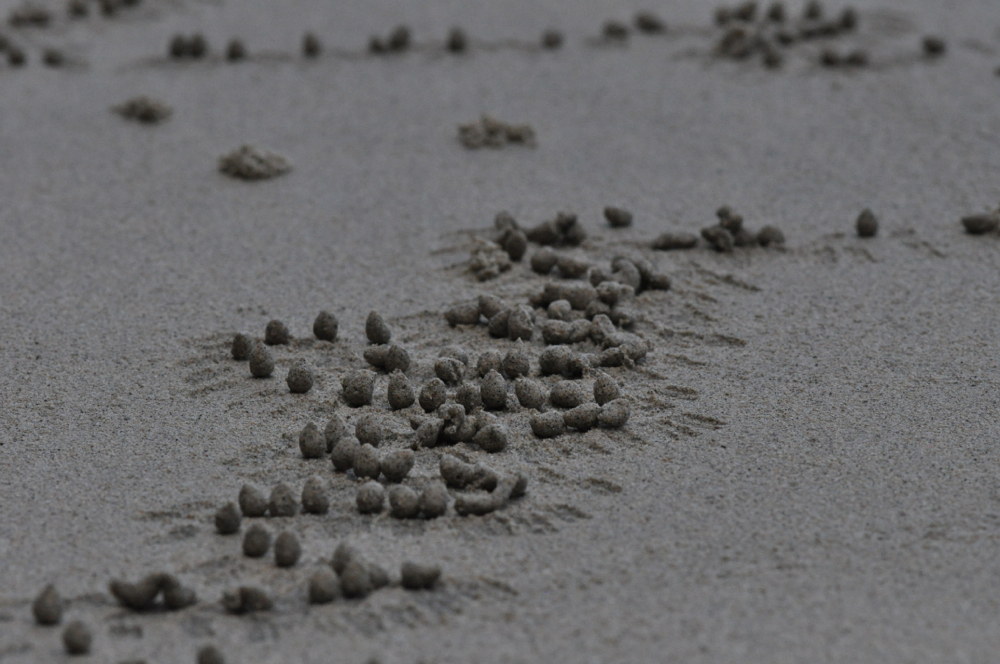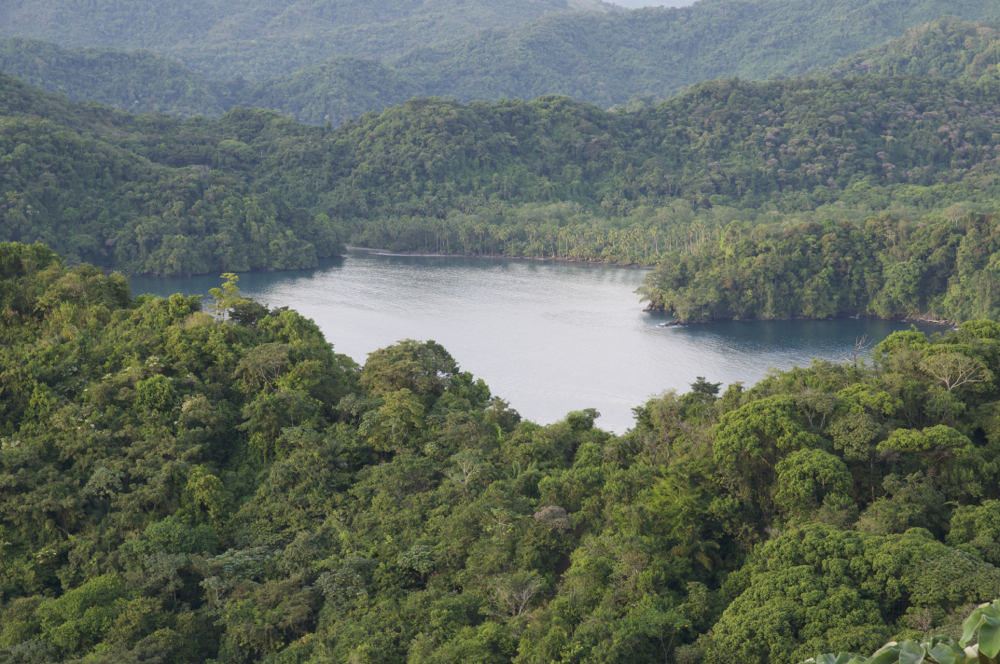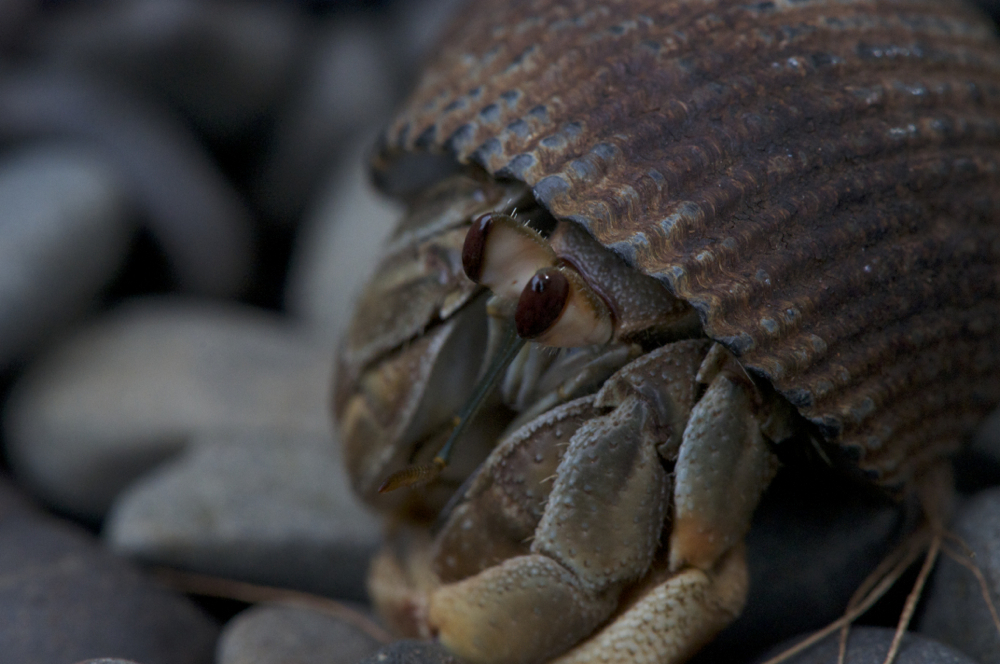Silencing of the Reefs, Panama
11 December 2013 to 21 December 2013
As part of the project TBA21 Academy Jana is on the vessel Dardanella by Panama City to travel to Isla del Ray, Bahia San Telmo and Isla Pedro Gonzalez which is part of Pearl Islands, they will also be travelling to Bahia Hermosa, Isla Jicarita and Isla Ladrones in Coiba National Park.
(Coiba National Park)
http://www.coibanationalpark.com


Bulldog bats fishing off the back of the boat at the anchorage at Isla Contreras in Coiba National Park.
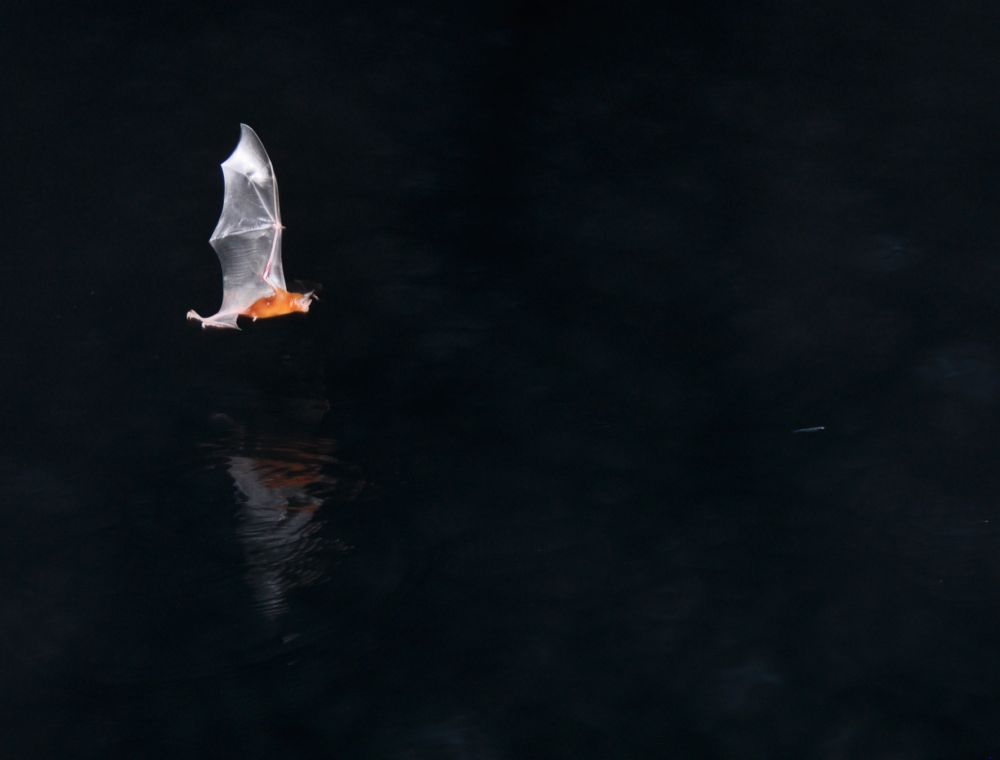
Earlier today recorded what we think is spawning aggregation of snappers, off one of the seamounts off the island of Brincanco.
Observed a Humback mother with a calf (Megaptera novaenangliae) very close, they came and checked out the boat, and then took off. Sting rays jumping with their full body out of the water. Possibly to get rid of parasites. Have seen many Spotted dolphins when on the way, have heard them in the distance, though closer around the spawning aggregation site. Recorded in the ultrasound range for later to slow it down to hear if there is someone operating in the ultrasound range of frequencies in the area.
In the area around Pearl Island I heard a male Humpback calling in the far distance, at the same time recording the thunderstorm approaching and the ultrasound of the bats hunting simultaneously.
I found several spawning aggregation sounds today. Since full moon yesterday it is likely to be spawning behaviour. The sea in Coiba National park has a large variety of species, this is a school of Razor Surgeonfish, Prionurus laticlavius.
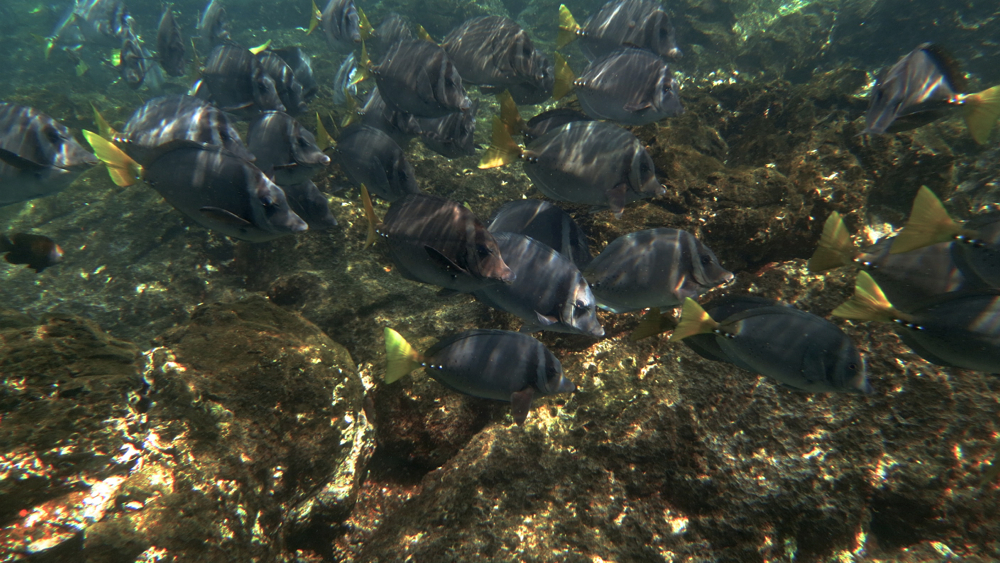
Guineafowl Pufferfish Aronthron meleagris. It changes its colour from dark purple to yellow.
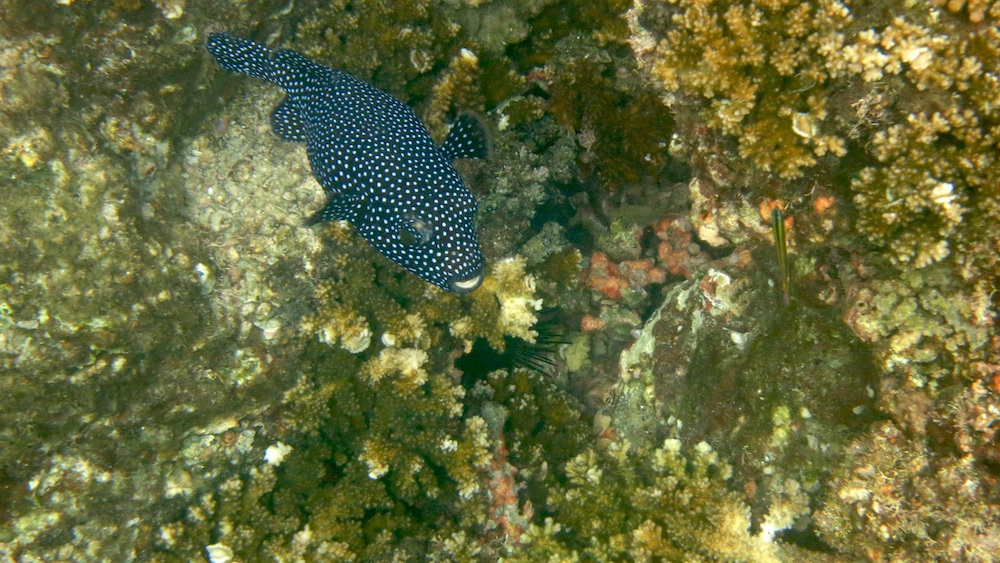
Two whalesharks (Rhincodontidae types) in the area feeding on krill.
Mantis shrimp rumbles are so synchronized that it sounds like a chorus, similar to that of groups of birds or frogs. The stomatopod rumble:
Low frequency sound production in Hemisquilla californiensis by S.N. Patnek & R.L. Caldwell.
http://ib.berkeley.edu/labs/caldwell/Caldwell%20pdfs/PatekCaldwell2006HemisquillaRumble.pdf
From the paper:
"The animals exhibited a stereotyped suite of behaviors during sound production. When
initiating sound production, the maxillipeds and, most notably, the raptorial appendages,
were pulled postero-dorsally and antennule flicking ceased. The carapace was typically
flexed toward the central body axis, resulting in a more depressed position of the edges of the carapace. At the conclusion of a burst of sound production, the carapace was released to a more elevated, less bowed position."
Find sound examples from Mantis Schrimp, Spiny lobsters and others at The Patek Lab.
(Patek Lab)
https://pateklab.biology.duke.edu
